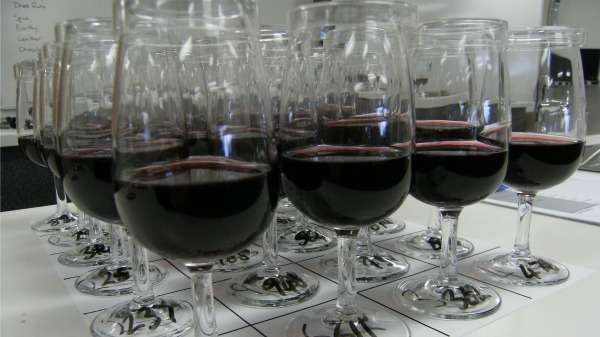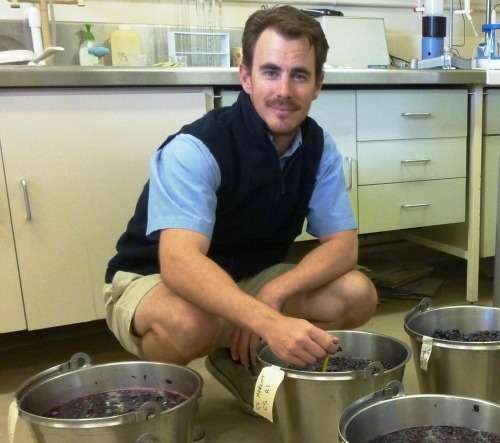'Cold soak' process turns up the heat on wines

Those pondering which elements make the best drop of wine may be surprised to learn different climates produce mixed results when it comes to wines made using the 'cold soak' process.
Department of Agriculture and Food WA researcher Richard Fennessy compared Shiraz, Cabernet Sauvignon and Merlot from Swan Valley and Mt Barker to determine differences between hot and cool climate regions using the cold soak process.
Cold soak, or pre-fermentation maceration, is a method used by some winemakers to enhance colour density and improve flavour complexity and intensity.
A panel of winemakers 'blind' tasted 24 wines in December 2013 and July 2014 to assess colour, aroma and palate.
The Australian Wine Research Institute also analysed the mine's chemical composition.
Mr Fennessy says some of the findings are perplexing.
The technique had a negative impact on the colour of hot climate Shiraz but did not cause any difference in the sensory or chemical analysis, while cool climate Shiraz showed no variations.
"Cool climate Shiraz is typified by a peppery characteristic, which the chemical compound rotundone is responsible for," Mr Fennessy says.
"But we found no difference in rotundone concentration between the two treatments, which was unexpected."
The process improved Swan Valley Cabernet Sauvignon quality, which was higher in the chemical compounds that contribute sweet fruit and berry aromas.

Wines that did not receive a cold soak were higher in the compounds that contribute banana and fruity aromas.
Cool climate Cabernet sauvignon cold soak wines were higher in the compounds that contribute a spirituous aroma, while those without the treatment were higher in banana, fruity and sweet perfume aromas.
Despite the differences in chemical composition, the sensory panel did not detect any disparities.
Hot and cool climate cold soak Merlot also showed changes in their chemical composition.
"Chemically, there were significant differences between the wines but the sensory panel did not detect any apart from an increased colour density in the hot climate cold soak wine," Mr Fennessy says.
Warm climate Merlot was higher in the compounds that contribute banana, fruity, sweet perfume and sweet soap aromas, while wines that had the treatment were higher in sweet fruit, berry and spirituous aromas.
The cool climate Merlot had no colour difference or significant chemical variations.
"It is a perplexing result—the chemistry is telling us one thing and the sensory panel the opposite," Mr Fennessy says.
"My conclusion is winemakers should take into account climate and variety when considering the cold soak technique."
Provided by Science Network WA




















